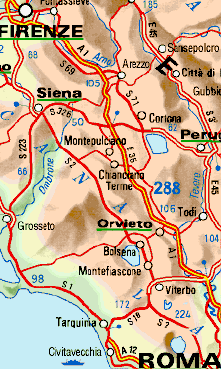Taparelli's magnum opus available from La Civiltà Cattolica
/A few days ago I discovered that the two volumes of Luigi Taparelli d’Azeglio’s Saggio teoretico di dritto naturale are now available on the website of the Jesuit journal La Civiltà Cattolica (first volume here, second volume here). They may have been available there for a long time, so this may be very old news. But better late than never, right?
Taparelli, a Jesuit of an aristocratic and politically invloved Piedmontese family, was an intellectual leader of the Italian Counter-Risorgimento. Indeed, part of the reason for the very existence of La Civiltà Cattolica, of which Taparelli was a co-founder, was to present a Catholic alternative to the Risorgimento. A later Jesuit, Antonio Messineo, who also wrote for the journal, dubbed Taparelli the “martello delle concezioni liberali” — “the hammer of liberal ideas.”
Taparelli was a key figure in the Italian Thomistic revival, a movement in which La Civiltà Cattolica also was instrumental. Aquinas was an essential guide for Taparelli in the Saggio. “To make sure that I had not erred,” Taparelli explains in a letter, “as my theories were born, I compared them with St. Thomas. He was the touchstone.”
In the Saggio Taparelli, guided by Aquinas and others (he also mentions Suarez, Bellarmine, and Vitoria), systematically outlines a Catholic social doctrine that is an alternative to Risorgimento liberalism.
Taparelli is perhaps best remembered (if at all) for his contribution to the concept of subsidiarity and for coining the term “social justice” (giustizia sociale). His understanding of social justice is not exactly the same as our contemporary notion of it. Thomas Burke (one of the few people who write about Taparelli in English — Thomas Behr is another) has this to say about Taparellian social justice:
It is one of the ironies of history that the quintessentially “liberal” idea of “social justice,” as it was to become (in American terminology), should have been originated by an ardent conservative … Unlike the conception of social justice generally accepted in our society at the present time, which is socialist and difficult, if not impossible, to harmonize with our ordinary conception of justice, Taparelli’s conception 1) is simply the ordinary and traditional conception of justice applied in a new area, namely the constitutional arrangements of society, 2) does not apply to states of affairs in society that could exist independently of human actions, 3) constitutes a defense of societal inequality, and 4) is conservative.
You can find the rest of Burke’s paper here. From Burke’s account one can see why Taparelli’s social thought has fallen out of favor. It is a shame and a reevaluation of Taparelli is long overdue.
It is hard to come by a decent and affordable used copy of the Saggio (which has never been translated into English). There are some reprint versions but you cannot always be sure what you are getting with these. The brand new text available from La Civiltà Cattolica is the definitive 5th revised edition of 1855 in the form in which it was published by Edizioni La Civiltà Cattolica in 1949.
(I have a short post on Thomas Jefferson, Taparelli, and social diversity here.)
***
UPDATE: Recycling large parts of the above post, I have a longer treatment of Taparelli here.



